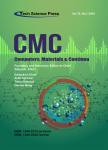TGAIN: Geospatial Data Recovery Algorithm Based on GAIN-LSTM
作者机构:School of Soft Engineering Jinling Institute of Technology Nanjing 211169 China School of Computer Jinling Institute of Technology Nanjing 211169 China School of Network Security Jinling Institute of Technology Nanjing 211169 China
出 版 物:《Computers, Materials and Continua》 (计算机、材料和连续体(英文))
年 卷 期:2024年第81卷第1期
页 面:1471-1489页
核心收录:
学科分类:08[工学] 0812[工学-计算机科学与技术(可授工学、理学学位)]
基 金:National Natural Science Foundation of China, NSFC, (62002144) Ministry of Education Chunhui Plan Research Project, (202200345, HZKY20220125)
主 题:data recovery generative adversarial networks Geospatial data temporal correlation
摘 要:Accurate geospatial data are essential for geographic information systems (GIS), environmental monitoring, and urban planning. The deep integration of the open Internet and geographic information technology has led to increasing challenges in the integrity and security of spatial data. In this paper, we consider abnormal spatial data as missing data and focus on abnormal spatial data recovery. Existing geospatial data recovery methods require complete datasets for training, resulting in time-consuming data recovery and lack of generalization. To address these issues, we propose a GAIN-LSTM-based geospatial data recovery method (TGAIN), which consists of two main works: (1) it uses a long-short-term recurrent neural network (LSTM) as a generator to analyze geospatial temporal data and capture its temporal correlation; (2) it constructs a complete TGAIN network using a cue-masked fusion matrix mechanism to obtain data that matches the original distribution of the input data. The experimental results on two publicly accessible datasets demonstrate that our proposed TGAIN approach surpasses four contemporary and traditional models in terms of mean absolute error (MAE), root mean square error (RMSE), mean square error (MSE), mean absolute percentage error (MAPE), coefficient of determination (R2) and average computational time across various data missing rates. Concurrently, TGAIN exhibits superior accuracy and robustness in data recovery compared to existing models, especially when dealing with a high rate of missing data. Our model is of great significance in improving the integrity of geospatial data and provides data support for practical applications such as urban traffic optimization prediction and personal mobility analysis. © 2024 The Authors. Published by Tech Science Press.



